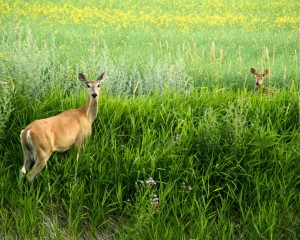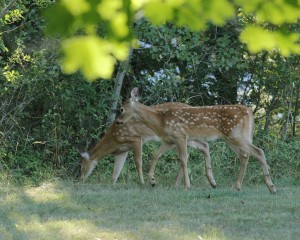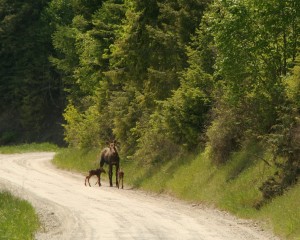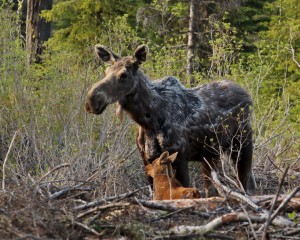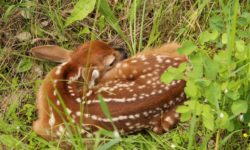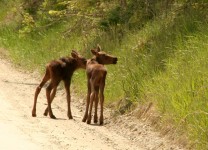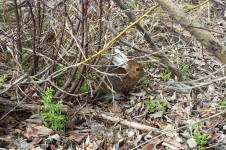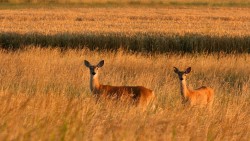On wobbly legs, newborn deer, moose and elk are a precious sight to us but a tasty sight for predators such as wolves, bears and coyotes. Females will soon be giving birth to calves they have carried all winter and the newborns each have strategies to keep themselves safe from predators.
The white spots dotting a white-tailed fawn’s back are one way the fawn stays safe. The spots help the fawn blend into the dappled light of forests and thickets where it remains motionless waiting for its mother.
Before the fawn is even born, the doe retreats to a fawning territory to be safer from predators. White-tailed does seek dense cover while mule deer does seek high, rough and steep ground.
After the fawn is born, the doe licks the newborn and cleans the birth area (including eating the placenta) to hide evidence of the birth from predators. By eating the placenta, the doe also recaptures nutrients. Fawns remain scentless the first few days by frequent grooming from the mother who also eats their feces and urine.
For the next few weeks, fawns rely on hiding to stay safe from predators. If an intruder is near, their heart rate and breathing slow down to help them remain undetected. Twins even hide separately to reduce the chance both will be found by predators.
Elk calves also rely on hiding to stay safe from predators. Before the calf is born, the cow elk retreats to a wooded area for birth. The cow licks the calf and eats the afterbirth like deer. The cow also eat the urine and feces for the first few days to minimize scent and flies.
Cow elk don’t remain away from the herd for long–they will often return to the herd almost immediately during the day while the calf stays hidden at the birth site. At first, a cow returns as often as every 20 minutes to nurse the calf. Like fawns, elk calves are cryptically colored, give off little scent and remain motionless when hiding. After two weeks, the calves join the herd and flee with the cows when threatened.
Unlike deer and elk calves which are “hiders”, moose calves are “followers”. Within a few hours of birth, the moose calf is standing and stays next to its mother. For nursing, the mother may lie down which is unique to moose and caribou in the deer family.
Like deer, cow moose retreat to a secluded area to give birth which tends to be in dense cover or at high elevations. The area usually has good forage to nourish the mother during lactation because the average newborn calf weighs 35 pounds at birth and gains two to four pounds per day. By the time the calves are weaned in the fall, they weigh 260 to 330 pounds.
Surviving to autumn hinges on the moose calf staying close to mother. The calf stays close to its mother’s heels and if threatened, hides behind her and her defensive actions.
The threat of predators is high for newborn deer, moose and elk. Nearly 30 percent of mule deer fawns don’t survive to their first autumn and 75 percent don’t survive to the next spring. Some calves do beat the odds and live on to reproduce the next generation of calves which will face the same challenges of survival.

